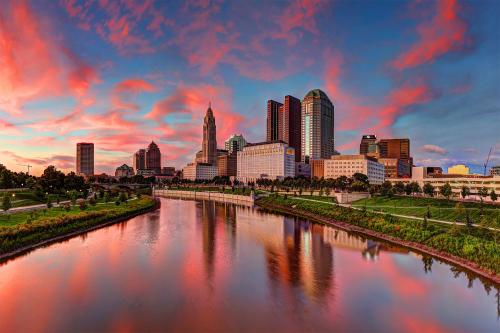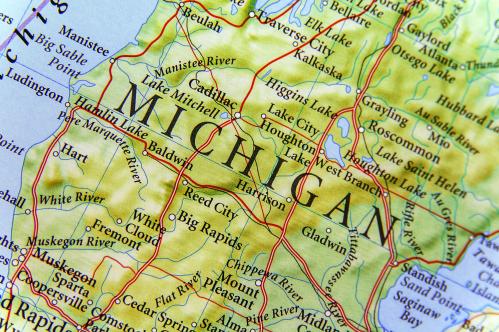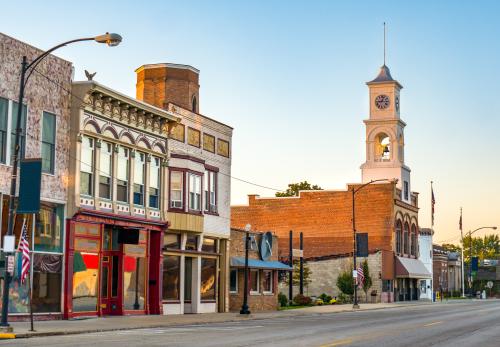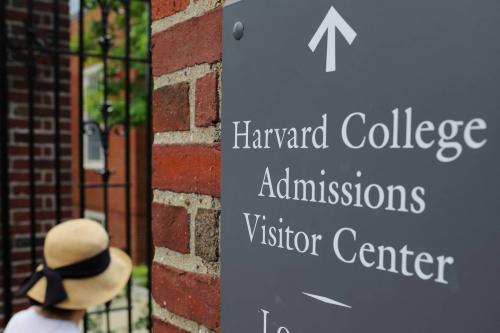In the last entry of this series, I explored how some communities in the Great Lakes-Rust Belt region have managed to leverage particular assets or adopt innovative economic development strategies–efforts that are succeeding in rebooting local economies for a new era. These places are successfully shaking off their “rust.”
Perhaps the most important and unique of these assets are colleges and universities. The region boasts an impressive network of 20 of the world’s premier research and teaching universities (ranked in the top 200 worldwide), more than in any other U.S. region (Table 1). Yet ironically, as the link between higher education and prosperity grows ever stronger, governments at the national and state levels are advancing policy decisions that could weaken these critical assets, and the economic future of the Rust Belt and United States as a whole.

The Midwest’s universities are regional economic anchors
Research and learning institutions have been major contributors to the economic transition and revival of many of the region’s major metro areas, including Minneapolis-St. Paul (University of Minnesota), Madison (University of Wisconsin), Cleveland (Cleveland State and Case Western), Columbus (Ohio State University), and Pittsburgh (University of Pittsburgh and Carnegie Mellon). Colleges and universities also help drive many dynamic small and midsized economies, including Iowa City (University of Iowa), Champaign-Urbana (University of Illinois), South Bend (Notre Dame), Bloomington (Indiana University), West Lafayette (Purdue), Evansville (Southern Indiana University), and “boomtown” State College (Penn State).
Satellite campuses of leading state public university systems are also central to attracting and preparing talent, and serve as anchors for new business growth and economic development in many of the region’s historic industrial and trading cities, such as Duluth (University of Minnesota-Duluth), Green Bay (University of Wisconsin-Green Bay), Marquette (Northern Michigan University), Kalamazoo (Western Michigan University), Athens (Ohio University), and Buffalo (University of Buffalo).
These college and university towns, not coincidentally, boast among the highest educational attainment levels across the Midwest (Map 1). This, in turn, contributes to high and rising incomes in their local communities; as my last post revealed, higher education anchors many of the counties boasting above-average incomes in Rust Belt states.

Higher education has a strong legacy in the Rust Belt
How did this rich educational landscape come to be? The Upper Midwest has a special history with education dating back to its initial political organization. The Northwest Ordinance, adopted by Congress in 1787, organized the then-territories of the Midwest. Informed by the values of Jeffersonian democracy, the Ordinance ordained that the region would have free, not slave, labor; and local governments would be close to the people, giving birth to the Midwest’s numerous townships. Education was key to these arrangements. In the words of the Ordinance: “Religion, morality, and knowledge being necessary to good government and the happiness of mankind, schools and the means of education shall forever be encouraged.” [emphasis mine] Land in every township was set aside for a public school.
The subsequent flood of largely northern European immigrants who settled the region were people of faith who also carried a deep commitment to education. As farming communities flourished in the early and mid-1800s, religious denominations and towns competed to found and build private and religious colleges on the frontier (Beloit College in Wisconsin, Albion College in Michigan, Kenyon College in Ohio) to both “train up” men and women of faith, and make their communities more attractive to other learned people.
The region also created new models for public education and higher education. In 1858, Kalamazoo, Michigan became the first community in the nation where residents taxed themselves to provide a free public high school education to all residents (an opportunity extended today to higher education by the much-emulated Kalamazoo Promise).
States created public universities (as in my hometown University of Michigan in 1817) to train the teachers, doctors, lawyers, managers, scientists, bookkeepers, and accountants needed in a growing economy and society. A major educational innovation was the Civil War-era creation of the Land Grant public university—first established in states of the Midwest—which were designed to provide high-quality, low-cost higher education to the masses, while supporting the growth of agriculture, commerce, and industry. In the 20th century, the nation’s earliest community colleges were founded in the region (the first was Joliet Junior College in Joliet, Illinois) to prepare the workforce needed by a rapidly industrializing economy.
These institutions collectively did their job—today the Midwest’s colleges and top-tier public universities generate a disproportionate share of the nation’s research, innovation, and talent. With 31 percent of the nation’s population, Rust Belt states produce 35 percent of the nation’s total bachelor’s degree holders, 33 percent of its STEM graduates, and 32 percent of higher education degrees awarded (Figure 1).

Threats loom for higher education in the Rust Belt
Yet the pathway to economic renewal for many communities in the Rust Belt—leveraging the talent-building and innovation horsepower of this network of research and learning institutions—is today under siege at both the state and federal levels. As The Atlantic recently explored, diminished state financial support for higher education access and affordability has ratcheted up tuition and student debt burdens at these still high-quality, but no longer low-cost, public institutions.
At the federal level, the tax bill moving toward passage on Capitol Hill proposed to treat graduate students’ tuition subsidies as taxable income, threatening the pipeline of research talent being generated in the region (recent House-Senate negotiations may have dropped this provision). And proposed federal budget cuts to competitive the National Science Foundation (NSF), National Institutes of Health (NIH), and clean energy research funding—which top-tier universities in the region disproportionately win—would cut the legs out from under one of the major sources of innovation and economic value creation in the region.
These learning and research institutions are, in many ways, the foundation of the Midwest’s society, economy, and identity. No meeting of state business, civic, or political leaders in Michigan is held without the requisite nod to allegiances and in-state rivalry between alums of Michigan and Michigan State. Ohio State’s 550,000 living alumni say “Go Bucs” wherever they meet in the world. Today, the future of so many Rust Belt communities is bound up in successfully reversing state trends of disinvestment, continuing strong federal research support, and building ever-more effective local public-private partnerships to seed and translate the prodigious talent-building and innovation emerging from their colleges and universities into new companies, jobs, and regional vitality.






Commentary
Tale of two Rust Belts: Higher education is driving Rust Belt revival but risks abound
Wednesday, December 20, 2017